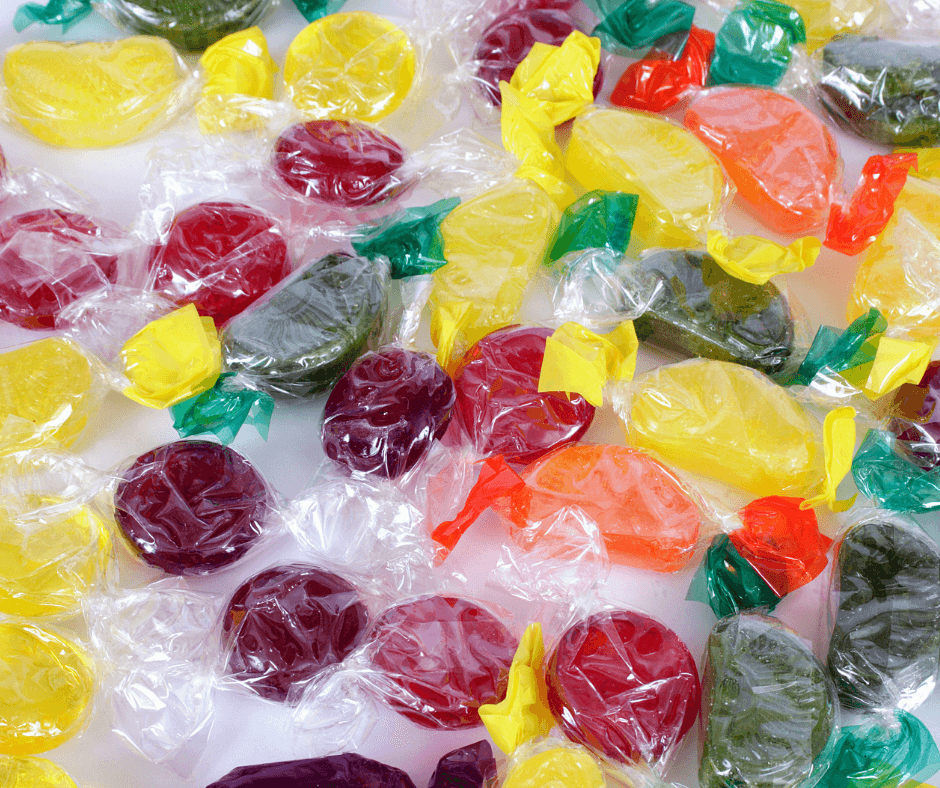Do you enjoy the sweet flavour and crunchy texture of boiled sweets? Throughout the UK, boiled sweets are a tradition, and generations of each family have enjoyed the delicious taste at some point in their life.
Not only are these sweets simply delicious, but they’re also easy to make and cheap to buy. Sweet shops across the UK stock them, and if you prefer a traditional experience, you can choose a pick and mix bag of boiled sweets from the jar.
One of the main issues people have with boiled sweets is knowing how to store them properly. This post will look at why it’s essential to store your confectionery correctly and the best ways to keep your boiled sweets fresh.
Why Do You Need to Store Boiled Sweets Properly?
Hard-boiled sweets are made by heating sugars until they form a syrup - then letting the mixture cool, which creates a hard outer consistency. Boiled sweets are susceptible to heat and moisture, and people usually notice their boiled sweets get sticky in the summer.
As boiled sweets have no moisture content inside, they’ll naturally seek out any moisture when exposed to air - which means an open bag of sweets will turn into a sticky mess.
If you want to enjoy your sweets, you should make an effort to store them correctly. Not only will this prolong their shelf life, but it also retains their hard on the outside, chewy on the inside consistency.
So, let’s take a look at some tried and tested methods to preserve your hard-boiled sweets.
Protecting Store-Bought Boiled SweetsMost people buy their hard candies from traditional confectioners, online sweet shops or their local supermarket. In general, you’ll either find jars of traditional sweets that go into paper bags, or supermarkets usually package their sweets, so as soon as you open that packet, the candy will seek out moisture.
There are a few methods to preserve your boiled sweets, so whether you’re a store owner or just really love sweets, these great tips will help you to keep your confectionery fresh.
Wrap Each SweetWhile this method might be tedious, it is very effective and will prolong the life of your sweets. Confectionery shop owners will find this particularly useful because it enables you to provide a better customer experience.
If someone orders boiled sweets and they’re stuck together, it might impact your store. But the sweet shop that goes the extra mile by wrapping each sweet will show a commitment to customer satisfaction and generate higher levels of brand loyalty.
Choose cellophane or wax paper and cover each sweet. It will take some time, and this method isn’t the most environmentally friendly way to protect your boiled sweets, but it does work.
Use Corn StarchIf you’re not familiar with the benefits of corn starch, you should know that it’s one of the best moisture absorbers around. Using corn starch to coat your sweets means you can preserve their taste and stop them from sticking together.
When done right, you can coat the sweets in corn starch, and it will look like a dusting of sugar. Better still, it’s more environmentally friendly and has virtually no taste - so corn starch is a win-win solution.
Place Rice In Your Sweet ContainerYes, you read that right. Rice isn’t just a healthy food type; it’s also known for its moisture-absorbent qualities. When someone drops their phone in water, the first thing they should do is place it in rice because the grains remove moisture from the phone.
Sounds crazy? Maybe - but this method works. All you need to do is place some rice in the bottom of your container, and it will act as a sponge, which will retain the quality of your candy and stop it from sticking together.
If your sweets are already sticky, you should avoid rice because it will get stuck to the sweets, and you won’t be able to remove it properly.
Silica PacketsIf you’ve ever bought new shoes or electrical products, you’ll notice a small packet in the container. Silica packets are designed to absorb moisture, which protects items from water damage.
You can use them in your boiled sweet packaging to stop them from sticking together. Some packets even change colour to indicate how much moisture they absorb, which isn’t a necessary feature, but it’s interesting!
Use a Sealed ContainerAirtight containers are essential for keeping any food type-safe, but there are so many materials to choose between. Let’s make one thing clear; plastic isn’t the best material for storing your sweets, and it’s not just down to i’s sustainability issues.
Plastic is susceptible to moisture, so even an airtight container can still compromise the quality of your sweets. You can use silica to overcome this issue, but with plastic causing so many environmental problems, it’s best to find a more sustainable alternative.
Glass is the best material for your sweet jars because it’s strong enough to block any water from entering the jar, and you won’t need to use silica.
Preventing Boiled Sweets From Sticking While Cooking
It’s surprisingly easy to make your own boiled sweets, and there are plenty of unique flavour combinations you can experiment with. However, the cooking and cooling process requires moulds to shape the sweets.
It would be best to spray cooking oil into each mould because it will stick as the boiled syrup starts to cool. Many people often find their sweets become stuck, and they have to start the cooking process all over again.
By taking precautions, you’ll be able to create your sweets and make sure they look perfect. If cooking sugar syrups to high heat isn’t your idea of fun, we have a range of delicious wholesale boiled sweets at low prices.
All of our sweets are either wrapped individually or stored correctly, so you can rest assured that every delivery you receive will be of the highest quality.
With low prices on wholesale confectionery and speedy UK shipping, there’s a reason people choose Appleton’s for delicious sweets.
Fancy trying your hand at making your own sweets? Our how-to guide will provide everything you need to know. Check it out here.

